Count and Sum Functions in Excel
The most commonly used basic functions in Excel are SUM and COUNT, which are useful for performing simple calculations. This function counts or sums values when given conditions are met.
COUNT
Use the COUNT function when you want to know how many cells contain numeric values.
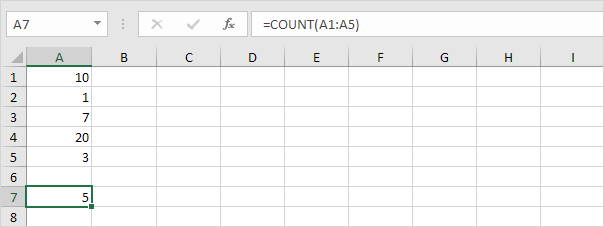
Note: Use the COUNTBLANK function in Excel to find out how many cells are empty, and use the COUNTA function to count the number of cells that have data.
COUNTIF
The COUNTIF function helps you count cells based on one condition—for instance, cells with values greater than 9.
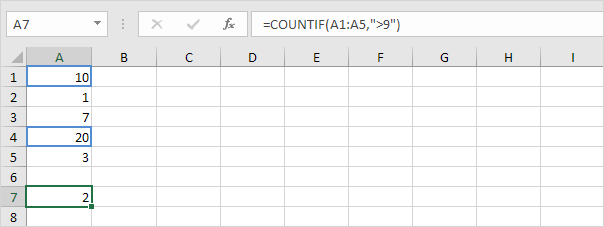
Note: Our COUNTIF function page contains more examples you might find helpful.
COUNTIFS
To count rows matching multiple conditions (such as “green” and a number larger than 9), use the COUNTIFS function.
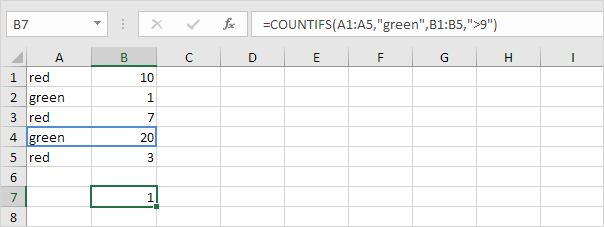
SUM
Use the SUM function to get the sum of numbers in a group of cells.

Note: Our SUM function page contains more examples you might find helpful.
SUMIF
You can sum cells based on a single condition (such as greater than 9) by using the SUMIF function with two arguments.

To sum values that match a specific condition (like “green”), use the following SUMIF function. The function includes three arguments: a range for checking a condition, the condition to evaluate, and a range to calculate the total from.
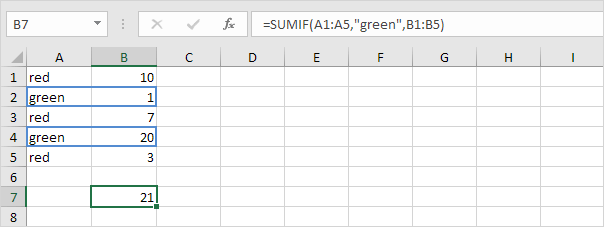
Note: Our SUMIF function page contains more examples you might find helpful.
SUMIFS
The SUMIFS function helps you sum values that meet multiple conditions, such as “circle” and “red.” The first argument should be the range of cells you want to sum.
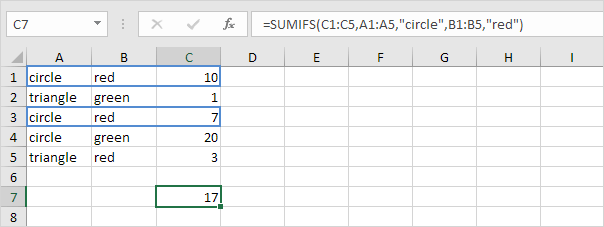
General note: In a similar manner, use the AVERAGEIF function to average cells that meet a single condition, and the AVERAGEIFS function for averaging based on multiple conditions.
1/10 Completed! Want to know the count & sum functions in Details ➝
Next Chapter: Logical Functions